On May 7th, 2024, 20h 49min UT (22h 49min CEST*), a bright , slow-moving and long-lasting fireball was observed by thousands of people from Belgium, the Netherlands, France and Germany, of whom more than 60 reported it to the IMO (Event #2294-2024, Figure 1) via the Online Fireball Report Form.
*CEST = Central European Summer Time
If you witnessed this event and/or if you have a video or a photo of this event, please
Submit an Official Fireball Report
If you want to learn more about Fireballs: read our Fireball FAQ.
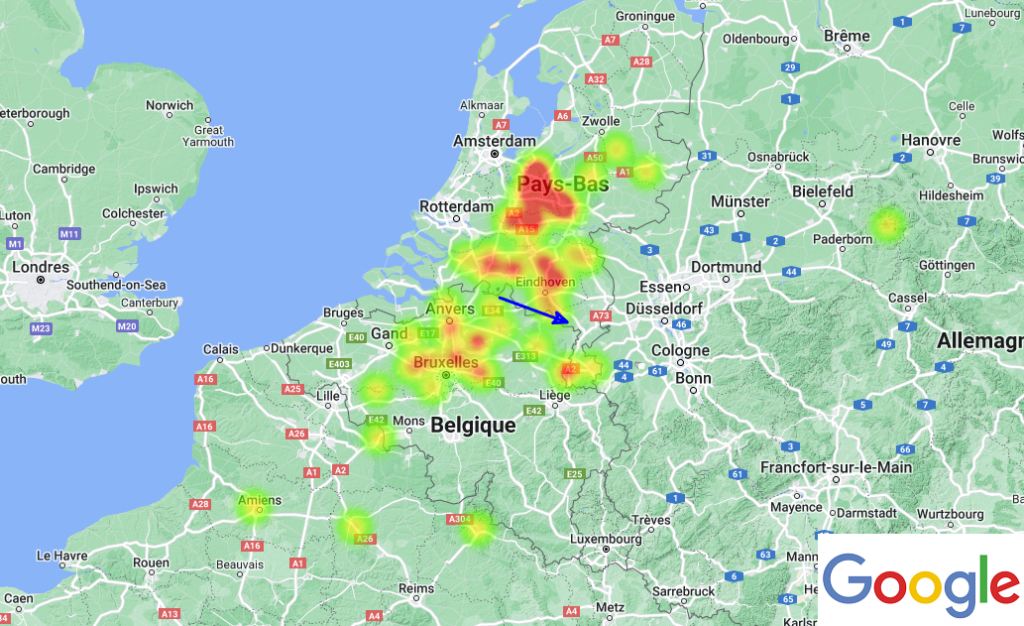
A bright, slow-moving and long-lasting fireball
The meteoric event was also recorded by several cameras and videos stations, especially those from DLR (Deutsches Zentrum für Luft- unr Raumfahrt) and Fripon-Belgium (Fireball Recovery and InterPlanetary Observation Network) meteor network (Figure 2). Those recordings allows to define the fireball which was visible for nearly 10 seconds (Figure 3), and reached -7 magnitude (Figure 4), which is 16 times brighter than planet Venus (currently visible in the morning).
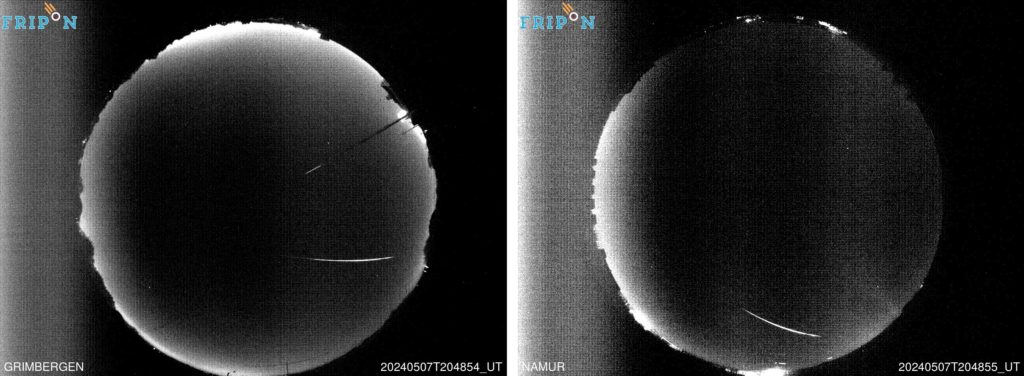
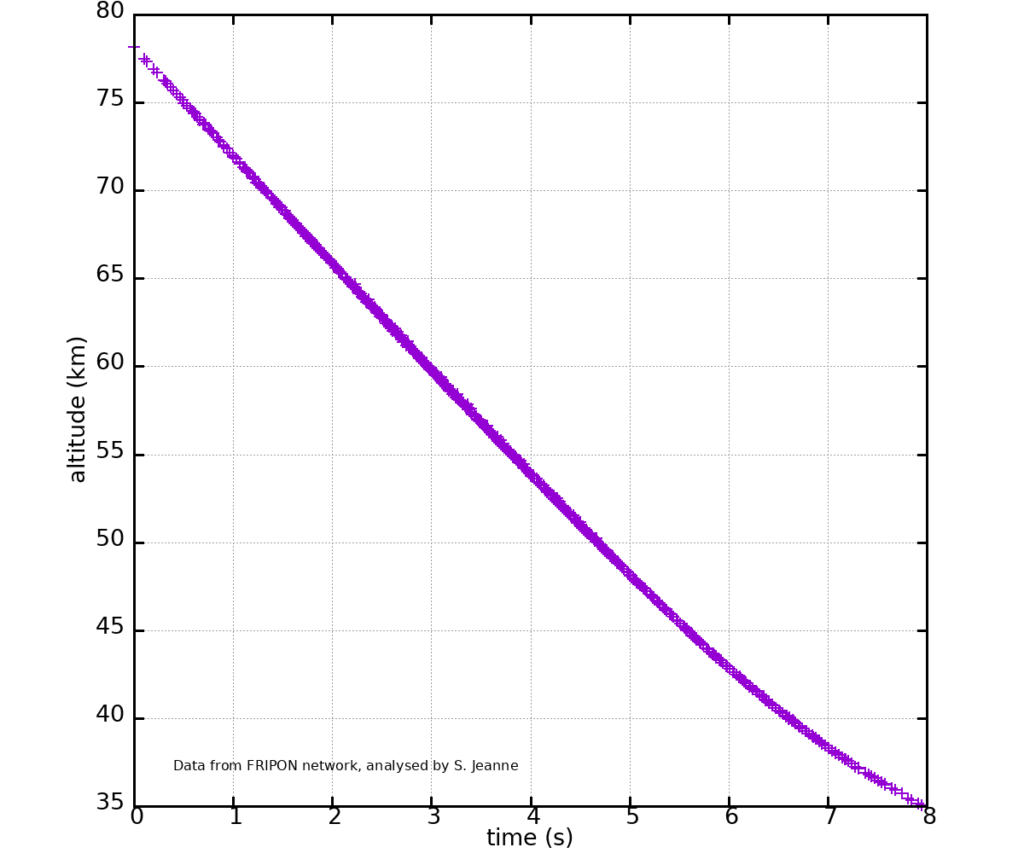
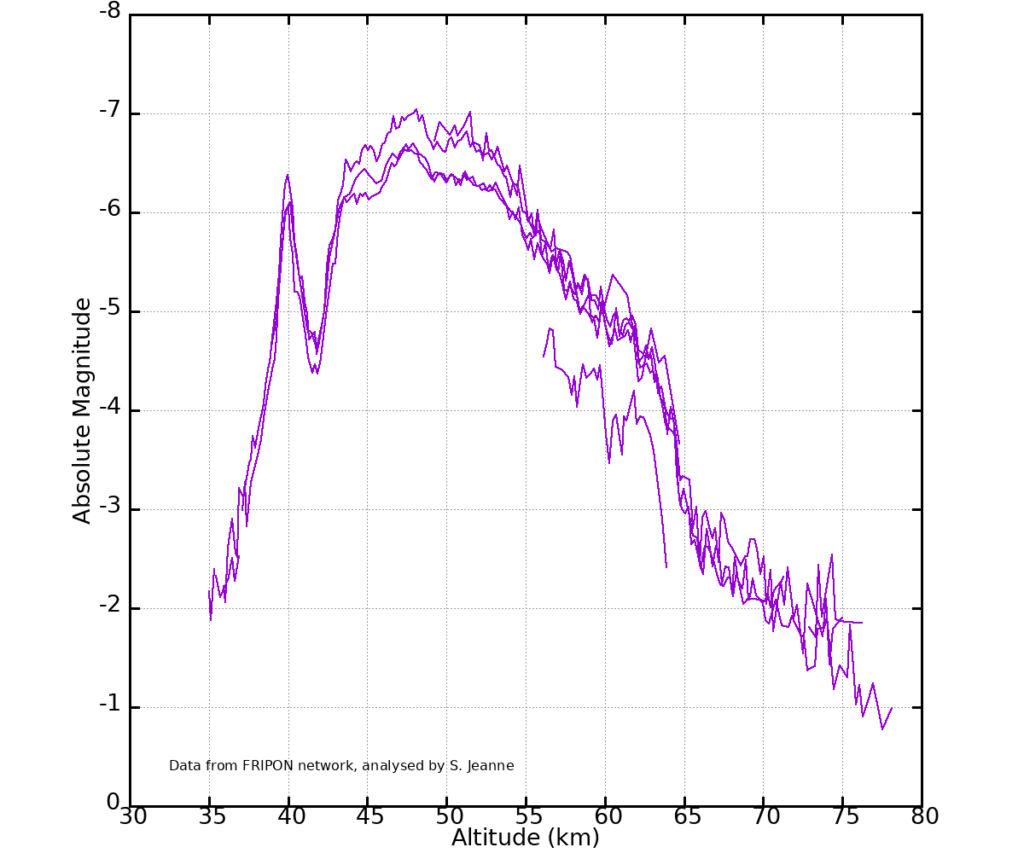
A fireball flying over Belgium…
According to Fripon calculations, the meteor was associated to a meteoroid originating from the inner parts of the asteroid main belt (between Mars and Jupiter, Figure 5). It entered the Earth atmosphere with a 12.5 km/s (approximately 45 000 km/h, Figure 6) speed and a 25° inclination relative to the horizontal. Its luminous path started vertical to Antwerp (Flemish region, Belgium), while it was 75 km high in the atmosphere. It then travelled in an Eastward trajectory (azimuth = 090°), to disappear while it was at a 35 km altitude, just above the Belgium/Netherlands border (Figure 7).
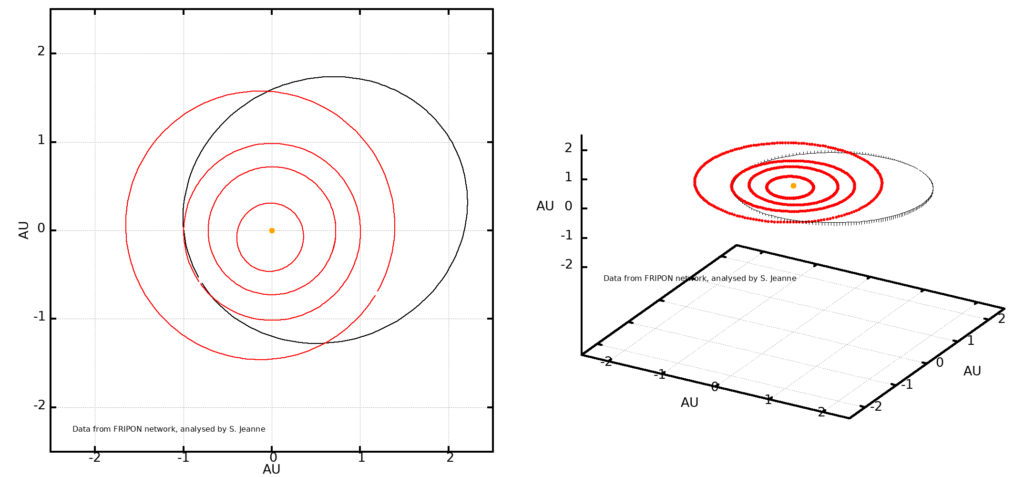
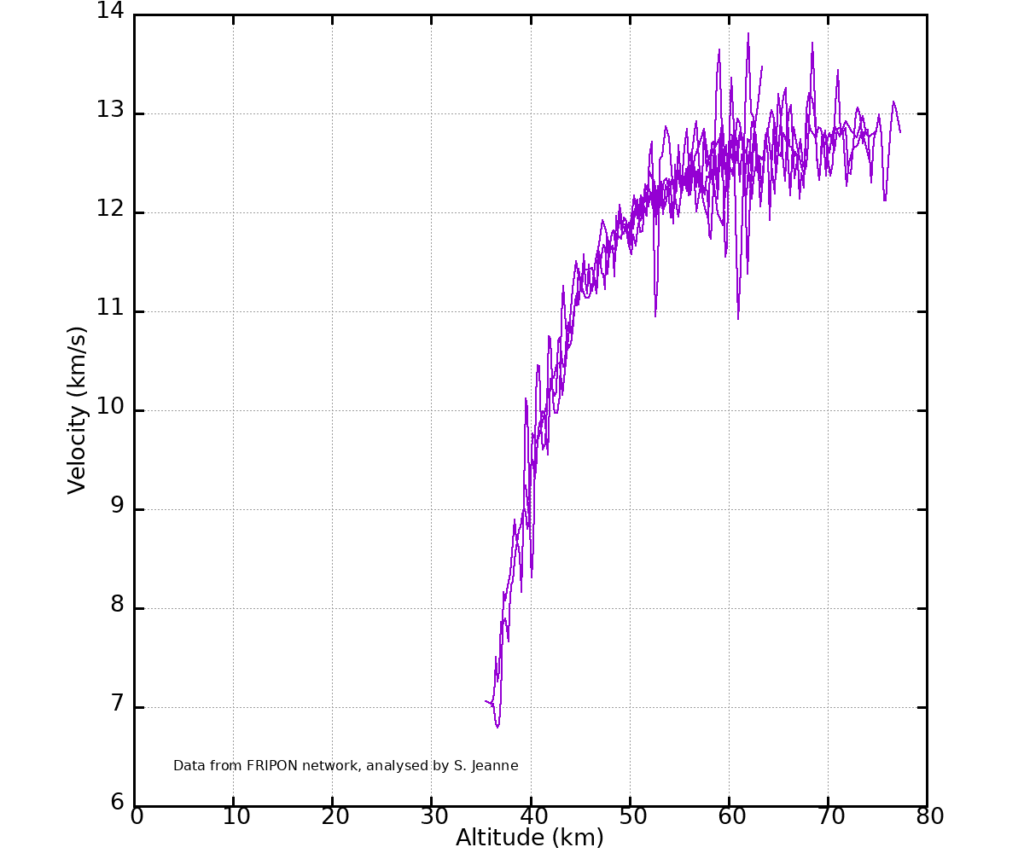
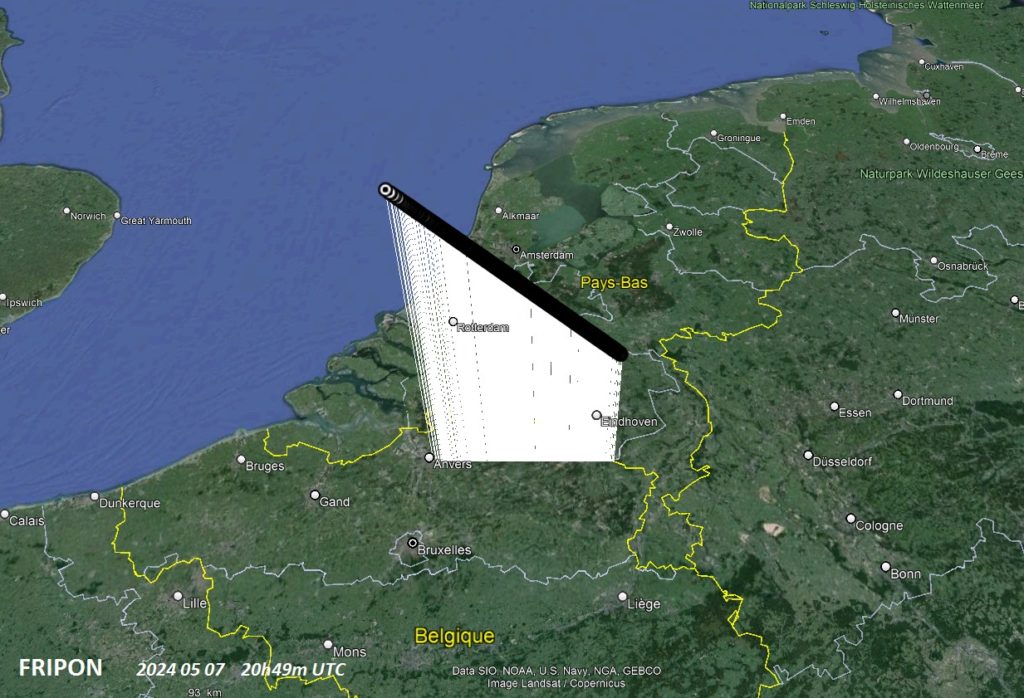
…but potential meteorites landing in Germany!
The potential remaining mass of the meteoroid then keeps on moving on its dark flight trajectory, passing above the Netherlands, to finally land just after the Netherlands/german border, West of Düsseldorf (North Rhine-Westphalia), in Germany! Without a good meteorological model, it seems the small potentially remaining meteorites (10 to 50 g) may have fallen in a West-East elongated area around the villages of Brüggen, Niederdrücken and Schwalmtal (North Rhine-Westphalia, Germany, Figure 8).
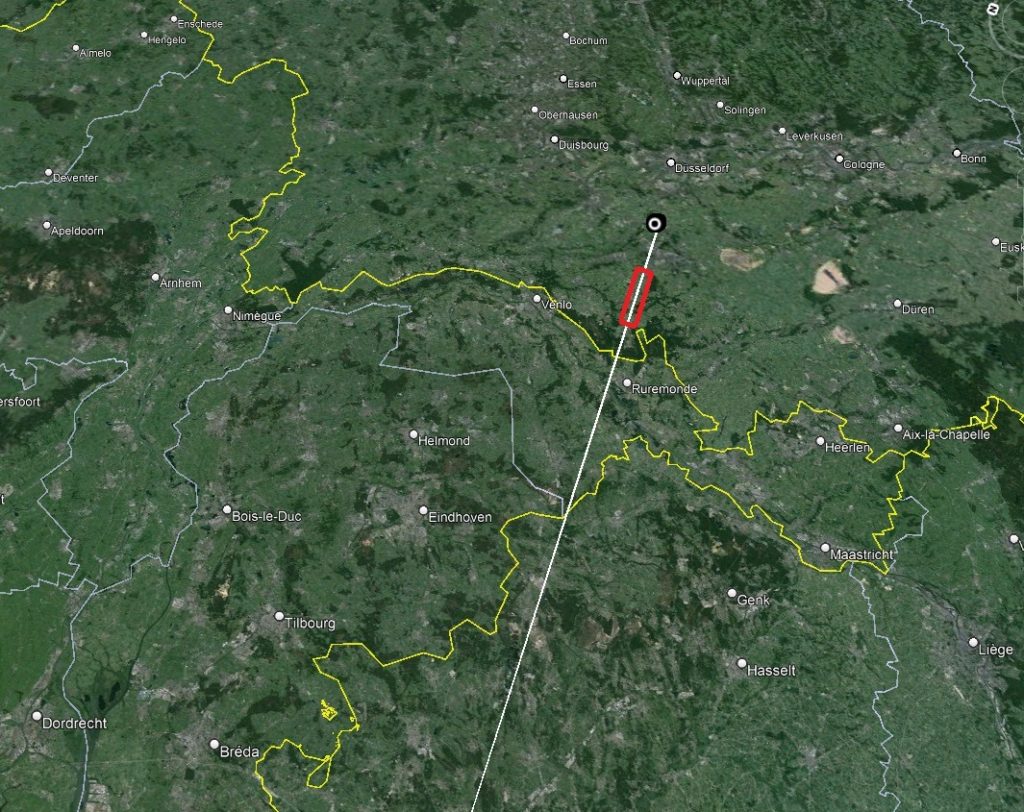
Seen the small mass of the potential meteorites, no organized meteorite hunt is being organized, but local inhabitants should be aware they may fall on tiny interplanetary rocks while they travel in this area of North Rhine-Westphalia (Germany).
Fireball, Bolide?
Several thousand meteors of fireball magnitude occur in the Earth’s atmosphere each day. The vast majority of these, however, occur over the oceans and uninhabited regions, and a good many are masked by daylight. Those that occur at night also stand little chance of being detected due to the relatively low numbers of persons out to notice them.
Additionally, the brighter the fireball, the more rare is the event. As a general thumb rule, there are only about 1/3 as many fireballs present for each successively brighter magnitude class, following an exponential decrease. Experienced observers can expect to see only about one fireball of magnitude -6 (crescent moon) or better for every 200 hours of meteor observing, while a fireball of magnitude -4 (Venus) can be expected about once every 20 hours or so.
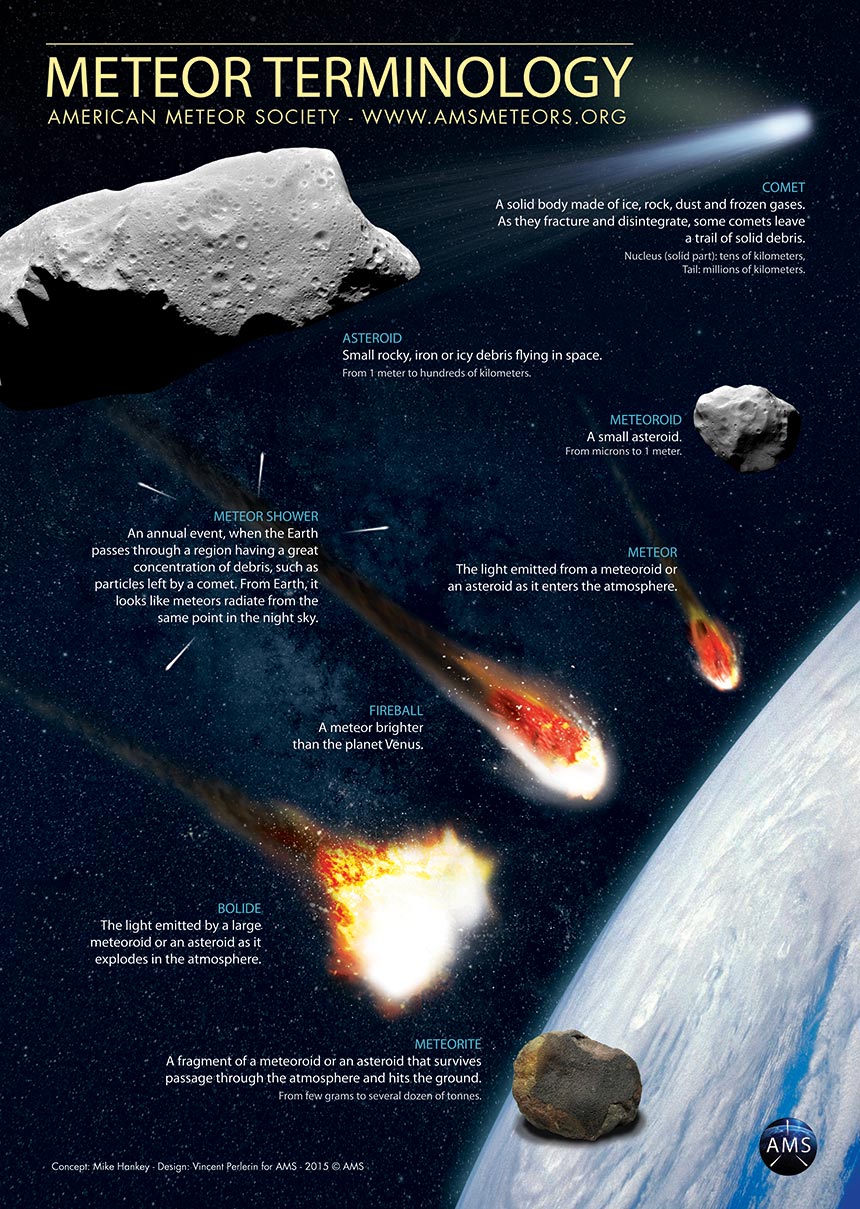




 You saw something bright and fast? Like a huge shooting star? Report it: it may be a fireball.
You saw something bright and fast? Like a huge shooting star? Report it: it may be a fireball.  You counted meteors last night? Share your results with us!
You counted meteors last night? Share your results with us!  You took a photo of a meteor or fireball? You have a screenshot of your cam? Share it with us!
You took a photo of a meteor or fireball? You have a screenshot of your cam? Share it with us!  You caught a meteor or fireball on video? Share your video with us!
You caught a meteor or fireball on video? Share your video with us!